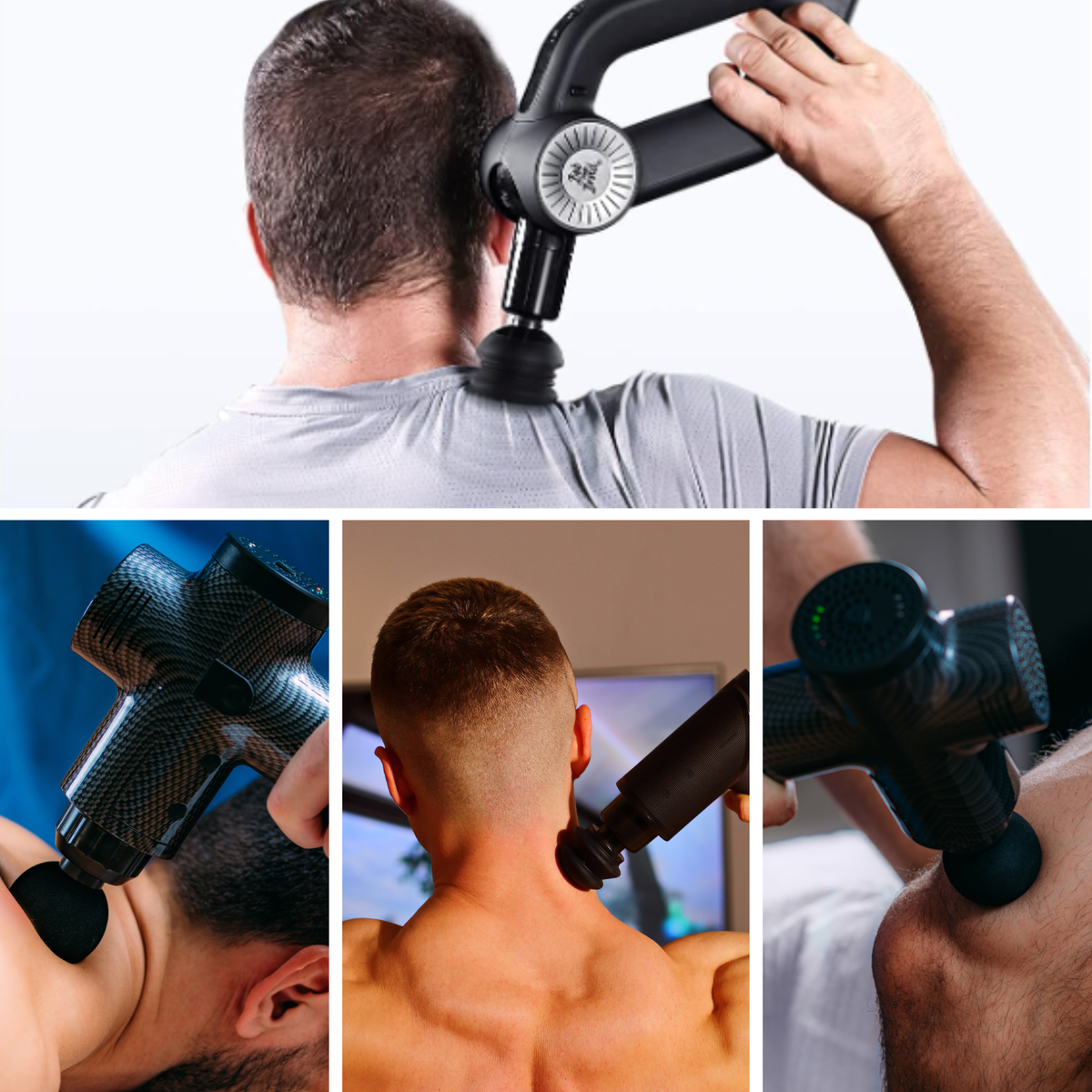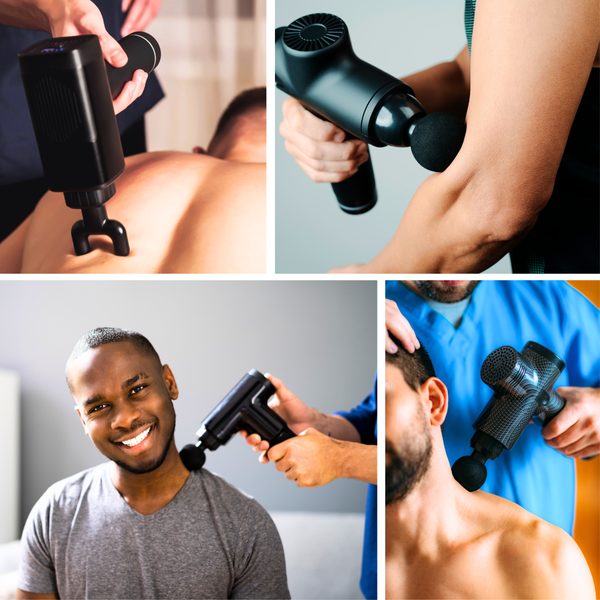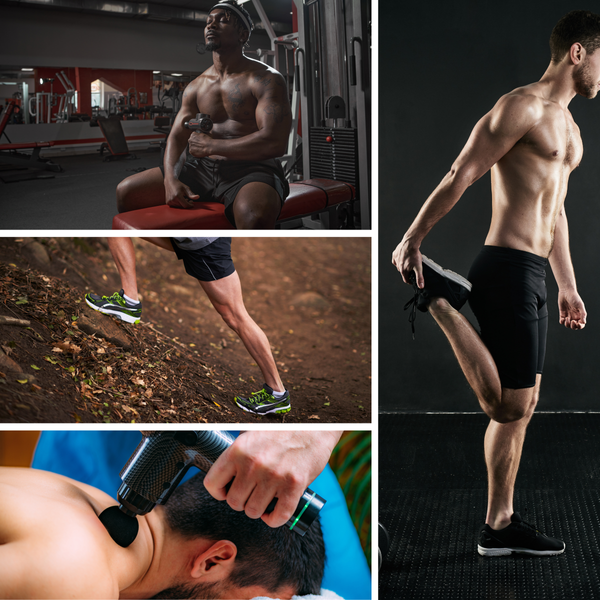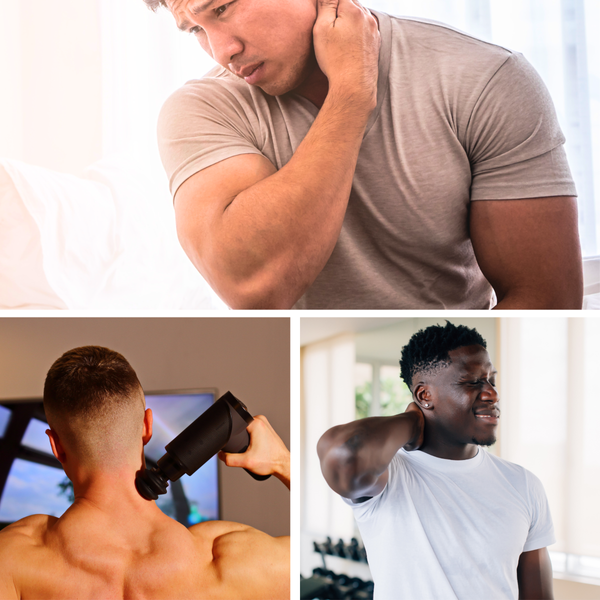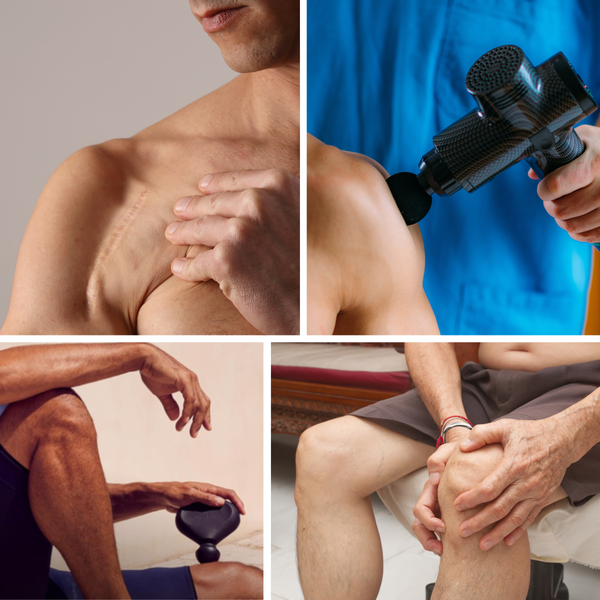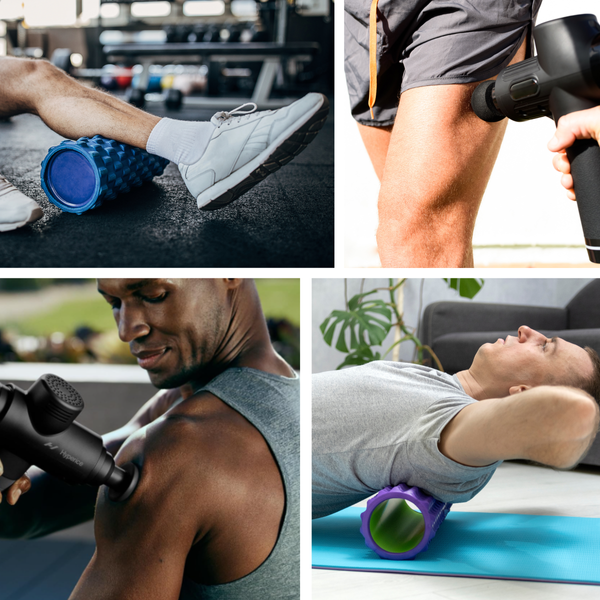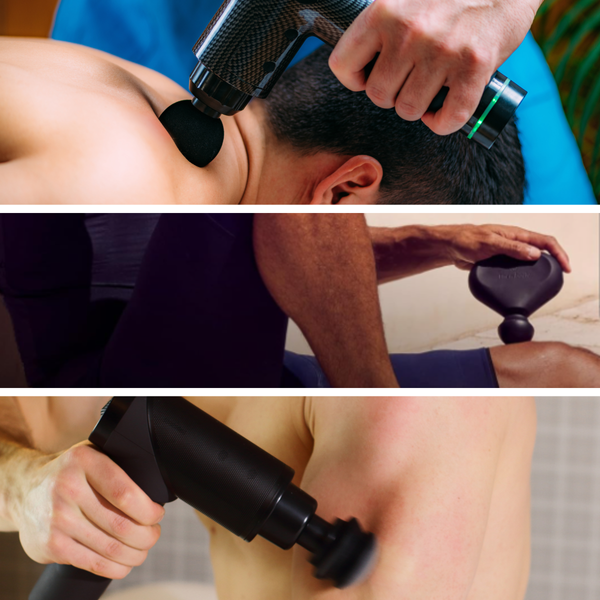Key Takeaways:
- Massage guns can be effective in treating muscle knots by using percussive therapy to increase blood flow and loosen tight muscles.
- Consistent use of a massage gun, combined with proper technique and the right attachment, can lead to significant relief from muscle tension and knots.
- While massage guns are a convenient tool for muscle recovery, they should be used as part of a broader approach to muscle health that includes stretching, hydration, and proper rest.
Muscle knots, or myofascial trigger points, are small, bump-like areas of muscle that can become painful and tight due to overuse, injury, or stress. These knots can cause discomfort and limit movement, leading many to seek out solutions like massage therapy. In recent years, massage guns have emerged as a popular tool for addressing muscle knots, but do they really work? Let's dive into the science and practical use of massage guns to understand their effectiveness in treating these stubborn muscle issues.
Understanding Muscle Knots
Muscle knots, scientifically known as a myofascial trigger point, are areas where muscle fibers have become contracted and bunched up, causing pain and discomfort. These knots can form in any muscle group but are commonly found in the neck, shoulders, and back muscles. They can be caused by a variety of factors, including poor posture, repetitive motions, or even emotional stress. When left untreated, these knots can lead to decreased flexibility and chronic pain.

The Science Behind Massage Guns
Massage guns, also known as percussion massagers, work by delivering rapid bursts of pressure into the muscle tissue. This percussive therapy is designed to mimic the effects of a deep tissue massage, which has been shown to help break up scar tissue, increase blood flow, and ease pain. By targeting the affected muscle knot with massage gun work, users can potentially reduce muscle tension and alleviate the discomfort associated with muscle knots.
Choosing the Right Tool for the Job
When using a massage gun for knots, selecting the right attachment and applying the correct amount of pressure is crucial. Most massage guns come with a variety of attachments designed for different muscle groups and issues. For knots, a smaller, more precise attachment is often the best choice, as it can apply more pressure directly to the affected area. However, it's important to start with light pressure and gradually increase it to avoid causing pain or injury.
The Role of Blood Circulation in Muscle Recovery
Muscle recovery tools like massage guns are designed to enhance blood circulation, which is a critical component in the healing process of muscle tissues. When a muscle gun is applied to the body, it can help to increase blood flow to the targeted area. This increased blood flow delivers more oxygen and nutrients to the muscles, which can accelerate recovery and reduce pain levels. By improving circulation, massage guns can also help to flush out lactic acid and other metabolic wastes that accumulate during a hard workout, providing relief and aiding in quicker recovery.
The concept of blood supply is particularly important when dealing with myofascial trigger points or muscle knots. These small bumps or nodules can form in the muscle fibres and nearby muscles, often as a result of stress injuries or remaining in one position for extended periods. A massage gun can apply pressure to these areas, stimulating the blood supply to the contracted state of the muscle fibers. This action not only helps in breaking up the knots but also ensures that the connective tissue surrounding the muscle receives sufficient blood to support the healing process.

Customizing Your Massage Gun Experience
Choosing the best attachment for your massage gun can make a significant difference in the effectiveness of the tool. Most massage guns come with a variety of attachments designed to cater to different muscle groups and types of pain signal. For larger knots or areas requiring a more intense treatment, a firmer massage gun attachment might be the most effective self-massage option. These attachments are adept at providing deep tissue stimulation, helping to release tension and promote muscle recovery.
On the other hand, for areas with increased sensitivity or for users new to muscle guns, a softer attachment can be used to gently apply pressure without causing discomfort. It's important to experiment with different attachments and pressure levels to find what works best for your body. Remember, while a massage gun can be a quick fix for muscle soreness after a hard workout, it's also crucial to use it as part of a comprehensive approach to muscle care, including proper warm-up, cool-down, and stretches to prevent stress injuries and maintain optimal muscle health.
Technique Matters
The effectiveness of using a massage gun on muscle knots also depends on the technique. To properly use a massage gun, one should aim to move slowly over the affected area, allowing the vibrations to penetrate the stiff muscles. It's recommended to spend about 15-30 seconds on each knot, being careful not to overdo it, as excessive use can lead to further muscle strain or injury.
Preventing Muscle Knots
While massage guns can be a helpful tool in treating muscle knots, prevention is always better than a cure. To prevent muscle knots from forming, it's important to maintain good posture, take breaks during long periods of sitting or standing, stay hydrated, and engage in regular stretching and exercise. Additionally, ensuring that you have a balanced diet and adequate rest can help keep your muscles healthy and free from tension.

When to See a Professional
Although massage guns can provide relief from muscle knots, they are not a substitute for professional medical advice. If you've experienced muscle tightness that doesn't improve with self-care, or if you're dealing with excruciating pain, it's important to consult with a massage therapist or healthcare provider. They can offer a more comprehensive treatment plan and help identify any underlying issues that may be causing your muscle knots.
Summary
Massage guns have become a popular tool for individuals looking to address muscle knots and improve their overall muscle health. By delivering targeted, percussive therapy to the affected muscle, these handheld devices can help increase blood flow, loosen tight muscles, and provide relief from pain. However, it's important to use them correctly, with the right attachment and technique, and as part of a broader approach to muscle care that includes stretching, hydration, and rest. While massage guns can be a convenient and effective way to treat muscle knots, they should not replace professional medical advice when needed.
FAQ Section
Q: Can a massage gun replace a professional massage therapist?
A: While massage guns can mimic some of the techniques used by massage therapists, they cannot fully replace the expertise and personalized care provided by a professional. Massage therapists can assess your condition and apply techniques that a massage gun cannot, such as manual manipulation and tailored treatment plans.
Q: How often should I use a massage gun to treat muscle knots?
A: It's generally safe to use a massage gun on muscle knots daily, but it's important to listen to your body and avoid overuse. Spending about 15-30 seconds on each knot and not exceeding a few minutes per session is a good guideline. If you experience increased pain or discomfort, reduce the frequency or consult a professional.
Q: Are there any risks associated with using a massage gun?
A: When used improperly, massage guns can cause bruising, increased pain, or muscle damage. It's important to read the instructions carefully, use the correct attachment, apply the right amount of pressure, and avoid using the device on bones, joints, or areas with nerve damage. If you have any medical conditions or concerns, consult with a healthcare provider before using a massage gun.



